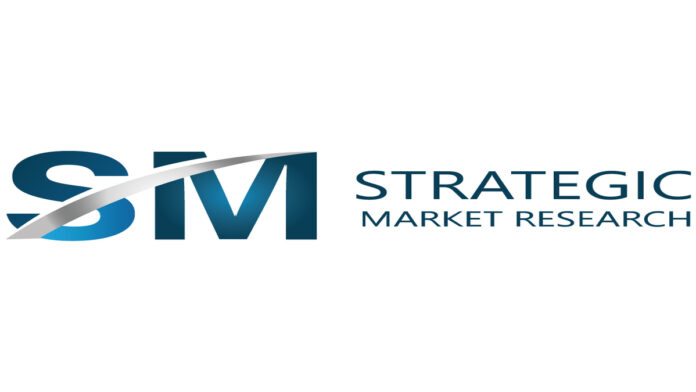In order to monitor and diagnose neurological conditions, brain monitoring devices examine the structure and function of the brain. Several brain monitoring tools, including magnetoencephalography, electroencephalography, and intracranial pressure monitors, comes in use during this process to track brain activity. These tools also support the monitoring of brain electrical and neural activity. The demand for electroencephalography equipment among healthcare professionals is currently rising.
The market worth of brain monitoring in 2021 was USD 5.78 billion and will be worth USD 10.09 billion by 2030. Growing at a 7.2% CAGR.
Rapidly increasing incidences of neurological disorders.
The demand for brain monitoring devices is driven by the rising incidence of neurological disorders like epilepsy, dementia, stroke, Parkinson’s disease, and Alzheimer’s. Approximately 10 million new cases of dementia comes in light annually, and as of September 2019. There were approximately 50 million affected individuals worldwide. By 2030, it is anticipating to rise by up to 75 million.
More than 50 million people worldwide suffer from epilepsy, and 80% reside in low- and middle-income nations. According to the American Academy of Neurology, Alzheimer’s disease is the sixth major cause of death in the US. According to statistics from the same source, Parkinson’s affectgs nearly 1 million Americans each year. With at least 60,000 new cases comes on average.
Technological development revolutionizing the brain monitoring market
Wireless brain sensors have opened up significant market opportunities in the ensuing years. However, recent developments have firmly resolved such differences. A biocompatible brain implant that can completely monitor brain injury was made in 2016 by researchers. Additionally, after the requirement is fulfilled, the device can completely dissolve into the soft tissue around it.
These sensors have been made to work for a shorter period before completely dissolving into the cerebrospinal fluid when submerged. which takes about a day. They are made of green electronic natural materials that are fully biodegradable and biocompatible. No inflammations were found during the animal testing phases due to safety concerns, demonstrating the device’s full biocompatibility.
Restraining Factors of Brain Monitoring Industry
The high cost of brain observation surgeries and equipment, particularly in developing nations with poor reimbursement policies. Is a significant restraint on the market for brain monitoring devices. Without the assistance of a trained professional, using brain monitoring devices is difficult and generally expensive.
Market Segmentation
Product Insights
The device and accessories segment ruled the overall market in 2020, with the largest share of 76.3%. The area is overpopulated due to several factors, including the rising prevalence of neurological, neurodegenerative, sleep, and psychotic disorders. The necessity of early diagnosis, the availability of portable and wearable monitoring devices that can be used at home, and increased patient awareness.
Procedure Insights
Due to an increase in traumatic brain injuries, the high acceptance rate of minimally invasive devices, and the low mortality rate, the non-invasive segment will grow at the fastest rate. Additionally, skeletal muscle microvasculature can be simultaneously measured using emerging non-invasive technology like Near-infrared diffuse correlation spectroscopy (NIR-DCS), which measures oxygen delivery and utilization.
Application Insights
Traumatic brain injury (TBI) dominates the market for brain monitoring devices in terms of applications. The rising prevalence of traumatic brain injuries worldwide, which is driving up demand for brain monitoring equipment in managing these patients, can be partly blamed for this market segment’s expansion.
End-user Insights
In 2020, the hospital sector held a 61.4% share of the global market for brain monitoring. The process of monitoring the brain is difficult and requires equipment that is typically only found in hospitals. Hospitals see a significantly greater inflow of patients than small clinics or other users. Hospitals also have enough funding to pay for the upkeep of brain monitoring equipment.
Regional Insights
North America would dominate the worldwide market and hold about 39.7% of the market share because of its strong healthcare infrastructure. High technological adoption and rising mobile device penetration have given this sector a competitive edge. The favorable regulatory environment and cost-effective healthcare programs also stimulate the demand for brain monitoring devices in North America. The rising senior population has also aided the development of the North American market for brain monitoring devices.
Key Players Analysis
Neural Analytics, Inc., Koninklijke Philips N.V., Elekta AB, InfraScan, Inc., BrainScope, Medtronic, Compumedics Limited (D & DJ Burton Holdings Pty Ltd.), CASMED (Edwards Lifesciences), General Electric Company, and Advanced Brain Monitoring, Inc. are important market participants in the brain monitoring industry.
Also Read: Lung Cancer Therapeutics Market Recently Published Report 2022








